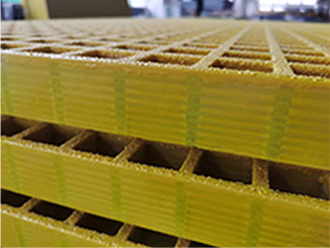loading...
- No. 9, Xingyuan South Street, Dongwaihuan Road, Zaoqiang County, Hengshui, Hebei, China
- admin@zjcomposites.com
- +86 15097380338
- Welcome to visit our website!
frp c channel
Understanding FRP C Channels The Future of Structural Support
Fiber Reinforced Polymer (FRP) C Channels are gaining significant traction in various industries due to their superior properties and versatile applications. Composed of a polymer matrix reinforced with fibers, typically glass or carbon, FRP C Channels offer a lightweight, corrosion-resistant, and high-strength alternative to traditional materials such as steel and aluminum. This article delves into the advantages, applications, and future of FRP C Channels in construction and engineering.
What are FRP C Channels?
FRP C Channels are structural components that feature a C-shaped cross-section, providing robust support in various applications. Their unique shape allows them to bear loads efficiently while minimizing material usage. Unlike traditional metal channels, FRP C Channels are designed to withstand harsh environments, making them ideal for use in locations vulnerable to corrosion, such as marine and chemical processing industries.
Advantages of FRP C Channels
1. Lightweight One of the most significant benefits of FRP is its lightweight nature. This characteristic not only reduces transportation and installation costs but also allows for easier handling on construction sites.
2. Corrosion Resistance FRP materials are inherently resistant to corrosion, which is critical in environments exposed to moisture, chemicals, or saltwater. This property extends the lifespan of structures and minimizes maintenance costs.
3. High Strength-to-Weight Ratio FRP C Channels possess a remarkable strength-to-weight ratio, meaning they can support substantial loads while being lighter than their metal counterparts. This feature is particularly valuable in applications where weight reduction is essential.
4. Non-Magnetic The non-magnetic nature of FRP materials makes them ideal for applications in sensitive environments, such as MRI rooms or locations requiring electromagnetic interference (EMI) shielding.
5. Thermal Insulation FRP C Channels have good thermal insulating properties, helping to regulate temperature in applications where thermal conductivity is a concern.
Applications of FRP C Channels
frp c channel

FRP C Channels are increasingly being used in various sectors, including
- Construction In the construction industry, these channels are utilized in frameworks, supports, and reinforcements. Their resistance to environmental degradation makes them excellent for use in bridges, walkways, and building facades.
- Transportation The lightweight nature of FRP C Channels is advantageous in the transport sector, where reducing vehicle weight can lead to improved fuel efficiency. They are used in the manufacturing of lightweight trains and buses.
- Marine Given their exceptional corrosion resistance, FRP C Channels are ideal for marine applications such as docks, piers, and shipbuilding, ensuring longevity in salty environments.
- Chemical Processing In chemical industries, FRP's resistance to aggressive substances makes it a favorable choice for supports and frameworks in environments where traditional metals may fail.
The Future of FRP C Channels
As technology advances, the production methods for FRP materials are becoming more streamlined and cost-effective. Innovations such as advanced composite manufacturing techniques and increased recycling of composite materials are expected to drive further adoption of FRP C Channels.
Additionally, with the growing emphasis on sustainability in construction and manufacturing, FRP materials are well-positioned to contribute as an eco-friendly alternative due to their durability and low maintenance requirements. Educational initiatives and increased awareness around the benefits of FRP in various industries will likely facilitate broader acceptance.
Conclusion
FRP C Channels represent a significant evolution in structural engineering, offering a combination of strength, versatility, and resistance to environmental challenges. As industries seek more sustainable, efficient, and durable solutions, the demand for FRP C Channels is expected to grow, marking a shift towards advanced materials in modern architecture and construction. Embracing these innovative solutions could pave the way for safer, longer-lasting infrastructure, heralding a new era in engineering design and implementation.
-
The Rise of FRP Profiles: Strong, Lightweight, and Built to LastNewsJul.14,2025
-
SMC Panel Tanks: A Modern Water Storage Solution for All EnvironmentsNewsJul.14,2025
-
GRP Grating: A Modern Solution for Safe and Durable Access SystemsNewsJul.14,2025
-
Galvanized Steel Water Tanks: Durable, Reliable, and Ready for UseNewsJul.14,2025
-
FRP Mini Mesh Grating: The Safer, Smarter Flooring SolutionNewsJul.14,2025
-
Exploring FRP Vessels: Durable Solutions for Modern Fluid HandlingNewsJul.14,2025
-
GRP Structures: The Future of Lightweight, High-Performance EngineeringNewsJun.20,2025
